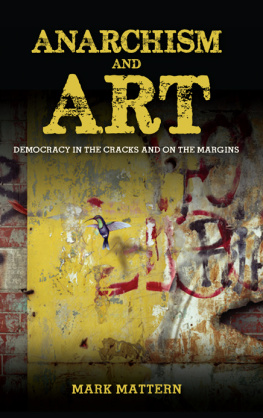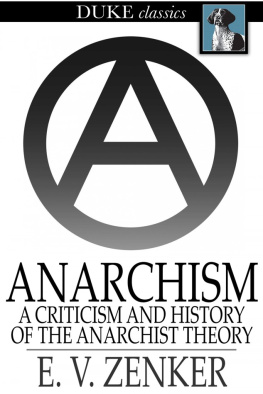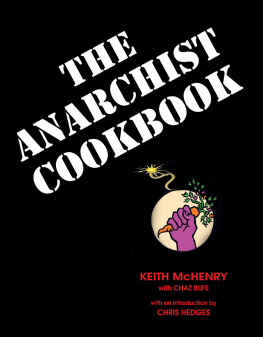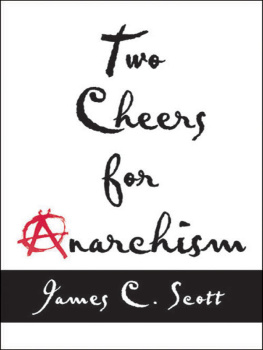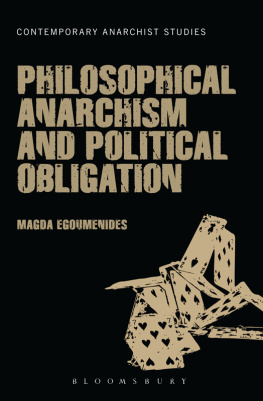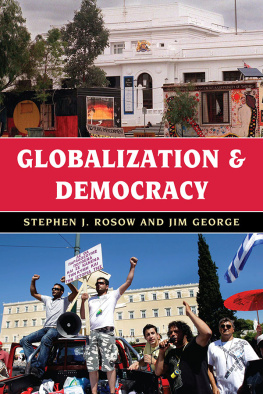Anarchism and Art
SUNY Series in New Political Science
Bradley J. Macdonald, editor
Anarchism and Art
Democracy in the Cracks and on the Margins
Mark Mattern
Cover image: Madison Near PittNYC 2000 by Dan Witz. Dan Witz, 2000.
Published by State University of New York Press, Albany
2016 State University of New York
All rights reserved
Printed in the United States of America
No part of this book may be used or reproduced in any manner whatsoever without written permission. No part of this book may be stored in a retrieval system or transmitted in any form or by any means including electronic, electrostatic, magnetic tape, mechanical, photocopying, recording, or otherwise without the prior permission in writing of the publisher.
For information, contact State University of New York Press, Albany, NY
www.sunypress.edu
Production, Eileen Nizer
Marketing, Anne M. Valentine
Library of Congress Cataloging-in-Publication Data
Mattern, Mark, 1954
Anarchism and art : democracy in the cracks and on the margins / Mark Mattern.
pages cm (SUNY series in new political science)
Includes bibliographical references and index.
ISBN 978-1-4384-5919-6 (hardcover : alk. paper)
ISBN 978-1-4384-5921-9 (e-book)
1. Politics in art. 2. ArtsPolitical aspects. 3. Democracy and the arts. 4. Popular culturePolitical aspects. 5. Art and society. I. Title.
| NX650.P6M37 2016 |
| 700.1'03dc23 | 2015006075 |
10 9 8 7 6 5 4 3 2 1
Contents
Acknowledgments
I would like to thank Michael Rinella, SUNY Press editor, and his assistant, Rafael Chaiken, for their assistance in completing this project. I also thank Bradley Macdonald, editor of the New Political Science series at SUNY Press, for his excellent work in developing the series. I gratefully acknowledge the scholars and activists of the Caucus for a New Political Science, who make the series possible.
Nick Riley and Jeremy Feador deserve special thanks for helping me enter the world of DIY punk music. I thank Alix Olson for her generous insights about poetry slam, and apologize if I managed to get it wrong anyway.
I thank Baldwin Wallace University (BW) for its financial support during the research and writing of this book. I thank Donna McKeon, BW Political Science Department secretary and office manager, for her endless patience and capable assistance. I thank BW students Dan Clapper, Matt Kusznir, Alex Nagy, Jenna Perry, and Rich Teel for their research assistance.
Chapter 4, , is adapted from my essay, The Message in the Medium: Poetry Slam as Democratic Practice, in Nancy S. Love and Mark Mattern, Doing Democracy: Activist Art and Cultural Politics (Albany, N.Y.: SUNY Press, 2013), 12142.
Introduction
We dont believe in waiting until after the revolution. If you want a better world you should start acting like it now.
Unbound Bookstore, Chicago
We need not conquer the world. It is enough to make it anew.
Subcomandante Marcos
All human experience teaches that methods and means cannot be separated from the ultimate aim. The means employed become, through individual habit and social practice, part and parcel of the final purpose; they influence it, modify it, and presently the aims and means become identical. The ethical values which the revolution is to establish in the new society must be initiated with the revolutionary activities of the so-called transitional period. The latter can serve as a real and dependable bridge to the better life only if built of the same material as the life to be achieved.
Emma Goldman
In this book, I argue that some forms of popular art exemplify anarchist principles and commitments that, taken together, prefigure deeper forms of democracy than those experienced by most people in todays liberal democracies. Prefiguration has two meanings, one descriptive and the other prescriptive. First, it means descriptively that current social forms contain hints of future possibilities. In this book I will explore hints found in popular art forms of specifically more democratic future possibilities.
The forms of art that I address in this book include DIY (Do It Yourself) punk music, poetry slams, graffiti and street art, and flash mobs. Marked as they are by tensions and contradictions, none prefigure utopian worlds. Yet each directs us toward alternative possibilities and new horizons. Each embodies commitments and practices that challenge contemporary political, economic, and cultural forms of domination while offering promise of more creative, satisfying, and democratic worlds. People involved in these alternative worlds of popular art expressly or implicitly signal to the world their unwillingness to play by (all) the rules imposed on them by others and by institutions and structures of domination. They instead carve out spacesboth physical and temporalwhere they live parts or all of their lives according to central anarchist principles. My task in this book is to describe their efforts and show how they prefigure a different, more democratic world.
Before turning to those art forms, I outline in this chapter the rationale for pursuing a prefigurative strategy and defend a focus on popular arts and culture. In the second chapter, I address anarchism and democracy, exploring their affinities and tensions while identifying analytical footholds for interpreting the case studies that follow. , I return to the themes of prefiguration and political strategy.
Strategies for Progressive Change
Sociologist Erik Olin Wright identifies three general strategies for progressive change that he calls ruptural, symbiotic, and interstitial. Ruptural strategies, which Wright identifies primarily with revolutionary socialism, entail a direct assault on the state and capital, and are considered successful to the degree that a wholesale and complete rupture with those institutions is achieved. The vestiges of state and capital must be decisively destroyed or abandoned for a new order to emerge. Revolutionary individuals and groups seek not to engage productively and positively with existing institutional forces; rather, they seek to destroy them via direct confrontation. Wright characterizes this bluntly as a Smash first, build second strategy. of competing forces, with the working class serving as the primary agent for driving ruptural change.
Some theorists and activists continue to view this ruptural strategy as viable, despite the apparently long odds. The dissolution of the former Soviet Union took with it the most obvious threat to neoliberalism, capitalism, and liberal democracy; and, anyway, few progressives viewed the former Soviet Union as an example worth emulating. Worldwide, the primary agent of revolutionary change in Marxist theory, the working class, has largely not fulfilled expectations. According to Marx, the working class would eventually recognize the exploitation it experiences and its own class interest in overturning capitalism. Marxists anticipated that workers widespread disenchantment with capitalism would lead to revolt to overturn capitalism in favor of socialism and, eventually, communism. Instead, most workers in industrialized countries have largely abandoned whatever revolutionary goals they may have at one time embraced in favor of higher wages, better working conditions, and social welfare spending that mitigates the harsher edges of capitalism. Many have become enthusiastic believers in ideologies that naturalize capitalism and its attendant inequalities. Overall, workers in the United States and elsewhere hardly seem poised to assume a revolutionary role.

